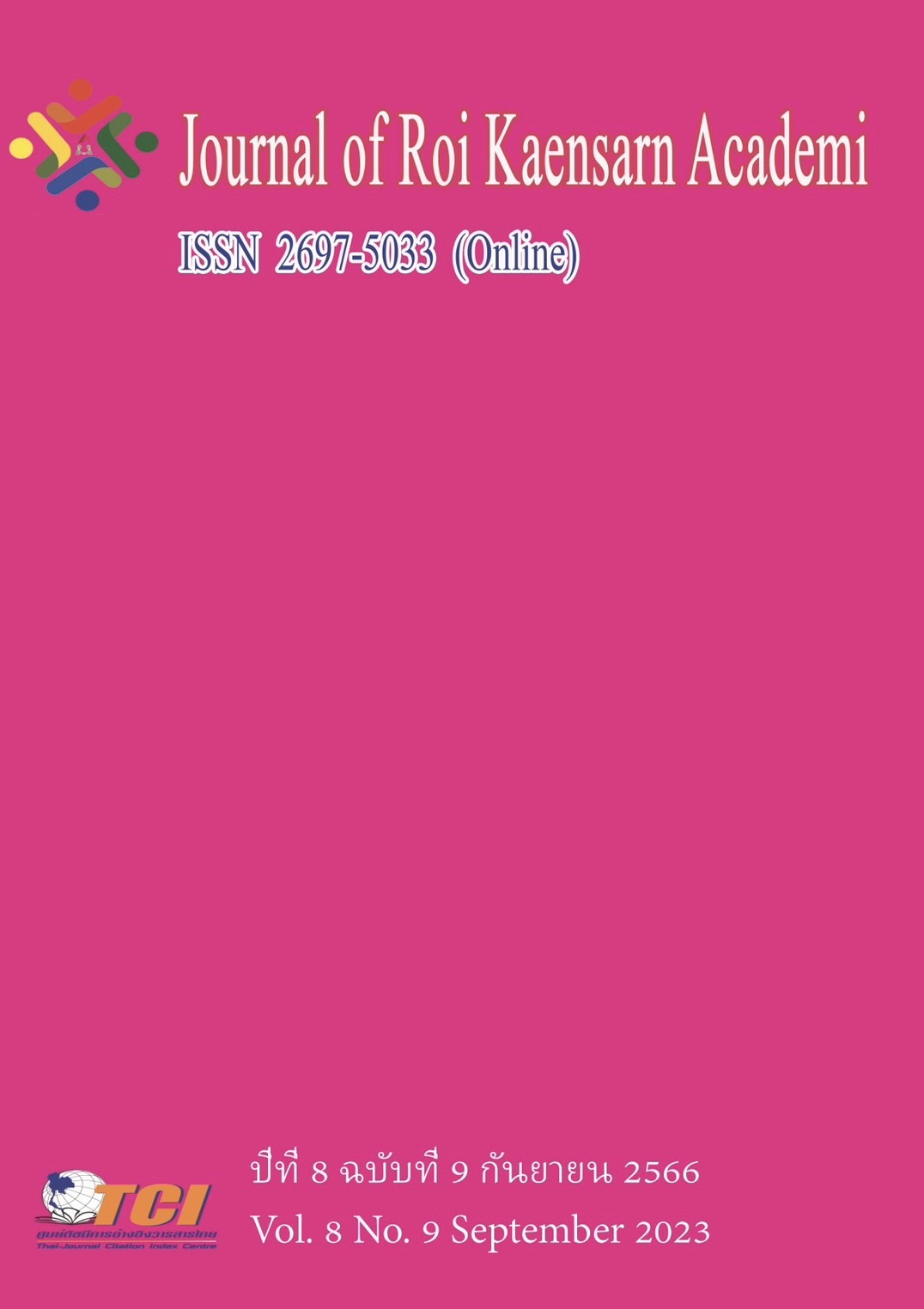Drama Education Influence on Creative ThinkingBased on Torrance Tests of Creative Thinking : Pre-Schools in China
Main Article Content
บทคัดย่อ
In advanced countries, drama education is a very important teaching method for developing students' creative thinking ability and comprehensive qualities and is even considered the best teaching method. However, in China, drama education is still in its infancy, and drama education has not been introduced for a long time. Drama education is seriously lacking in a Chinese kindergarten. But does drama education also promote the creativity of pre-school children in China? Will the age and gender of children moderate this promotion? To answer these questions, the research set a drama education experimental in Chengdu Jinjiang District Youshi Hebin Kindergarten which is a public Chinese kindergarten. This paper leverages t-tests, correlation coefficient analysis, variance inflation factor test, and an Ordinary Least Squares regression model to explore the causal relationship between drama education and pre-school children's creative thinking which is assessed by the Torrance Tests of Creative Thinking-Figural tests. Our results show that drama education has a positive impact on pre-school children’s creative thinking. Furthermore, the effect of drama education on the promotion of creative thinking is more pronounced when pre-school children are older or female. Based on the above conclusions, the researcher suggests that the proportion of drama education in Chinese kindergartens should be appropriately increased to enrich the curriculum system design of kindergartens and improve the creative thinking ability of pre-school children. This study will provide some theoretical support and data for the promotion of drama education in pre-school teaching in China.
Article Details
เอกสารอ้างอิง
Amabile, T. M. (1983). The social psychology of creativity: A componential conceptualization. Journal of Personality and Social Psychology. 45 (2), 357.
Cao C. D. (2000). The protection of children's creative thinking in early family education. Journal of Anqing Normal College (Social Science Edition). (4), 109-112.
Chen, S. M. (2013). Inheriting and promoting Minnan drama culture in children's drama education. Journal of Liaoning Normal University (Social Science Edition). (06), 884-889.
Dennis, R. (2021). The Inclusive Drama Studio: Adaptive Strategies in University Actor Training. In Inclusivity and Equality in Performance Training. 232-252.
Diarra, Y. (2017). The Effect of Socioeconomic Status a Parenting Behavior on Social Creativity of Children in Mali. Huazhong Normal University. Hubei.
Fu, S., Yao, G. (2020). The educational drama in China. DEStech Transactions on Economics, Business and Management.
Fu, W. W. (2017). Enhancing drama education and creating all-round developmental talents-Reviewing the principles and practical works of creative drama teaching. Chinese Journal of Education (11), 129.
He, T. T. (2017). Research on the development of creative thinking in middle school children. Shanghai: Shanghai Normal University.
Herianto, H., Wilujeng, I. (2020). The correlation between students’ curiosity and generic science skills in science learning. Journal Inovasi Pendidikan IPA. 6 (2), 237-246.
Isbel, Raines. (2012). Children's creativity and art education [M]. Beijing: Beijing Normal University Press.
Kim, K. H. (2006). Can we trust creativity tests? A review of the Torrance Tests of Creative Thinking (TTCT). Creativity Research Journal. 18 (1), 3–14.
Li, Y. (2011). Research on the relationship between fathers' involvement in parenting and young children's creativity. Beijing: Capital Normal University.
Lin, M. J. (2016). Guidance on Children's Drama Education Activities-Creative Expressions of Body and Voice Speaking. Jiangsu Early Childhood Education. (01), 61.
Mayesky, M. (2012). Creative Activities for Young Children [M]. Globe: Cengage Learning, 25.
Pearce, G., Jackson, J. (2006). Today's educational drama–planning for tomorrow's marketers. Marketing Intelligence & Planning.
Qian, Y. Q. (2012). Research on the development of creative thinking in children aged 3-6 years old . Hunan: Hunan Normal University.
Rowland, G. E. (2002). Every child needs self-esteem: Creative drama builds self-confidence through self-expression. The Union Institute.
Smogorzewska, J., Szumski, G. (2018). Developing preschoolers’ social skills: The effectiveness of two educational methods. International Journal of disability, development and education. 65 (3), 318-340.
Su S.Y.(2017). Research on the development and effect evaluation of creativity curriculum for 4-6 year olds . Shaanxi: Shaanxi Normal University.
Sugiarti, M., Husain, H. (2019). The correlation between academic honesty and a students’ curiosity with the results of learning based on discovery learning. 1st International Conference on Advanced Multidisciplinary Research. 336–340.
Suo, L. Z. (2010). A brief discussion on creative drama education and children's development. Journal of Zhangzhou Normal College (Philosophy and Social Science Edition). (02), 146-149.
Van de Water, M. (2021). Drama in education: Why drama is necessary. In SHS Web of Conferences (Vol. 98). EDP Sciences.
Wang, S. H. (2017). "Contextual" mathematics and children's creative thinking development practice acting . Innovative talent education. (3), 84-87.
Wei, T. T. (2021). Experimental study on picture book theme activities to promote creative thinking of middle class children. Tianjin Normal University.
Yu, L. C. (2018). Research on the method of stratified structural data analysis in the field of sample survey. Survey World. (02), 55-58.
Zhang, R. (2018). Comparative analysis and reflection on the drama education in Chinese and American universities. Science and Education Wenhui (Lower Journal). (02), 44-45.
Zhang, H. (2016). Research on the influencing factors of college sports teaching based on statistical analysis. International Journal of Smart Home. 10 (5), 262–274.
Zhu, Z. (2019). Study on training methods of intercultural communication abilities in drama education of college english teaching. Proceedings of the 5th International Conference on Arts, Design and Contemporary Education (ICADCE 2019). 883–888.

